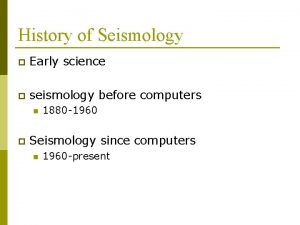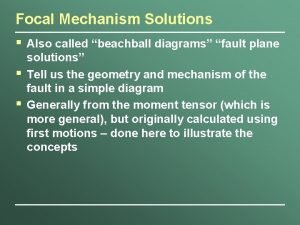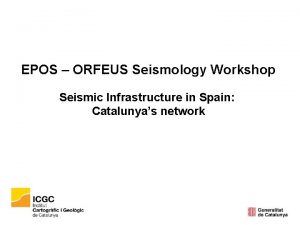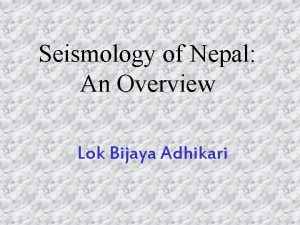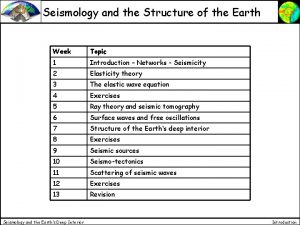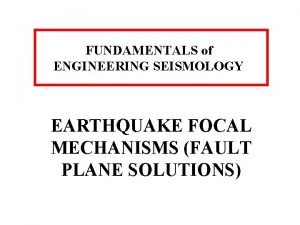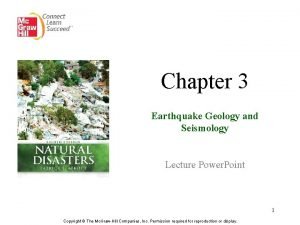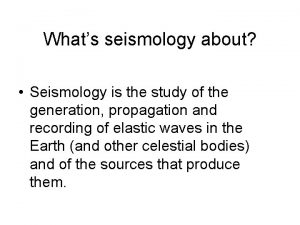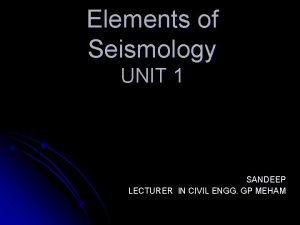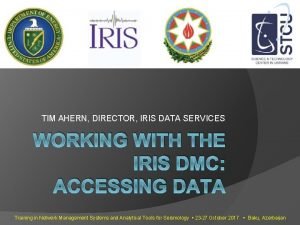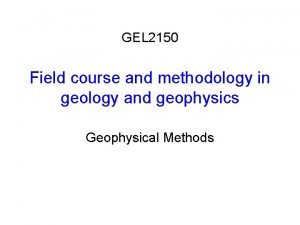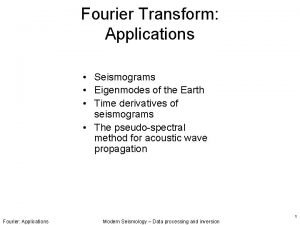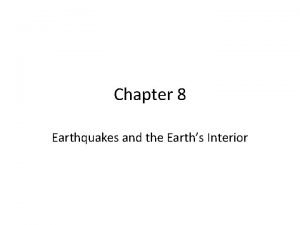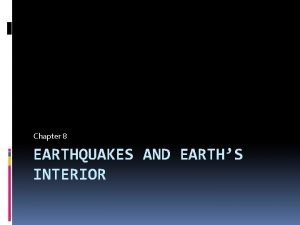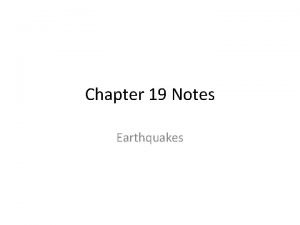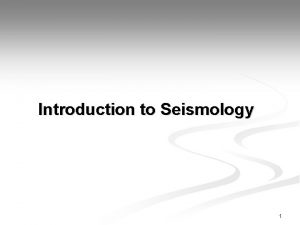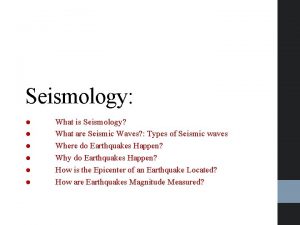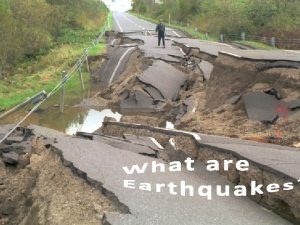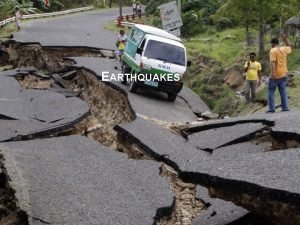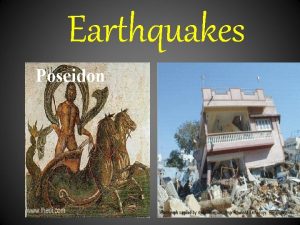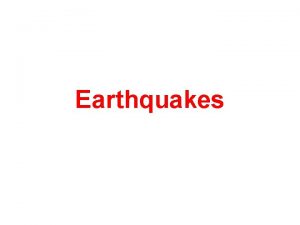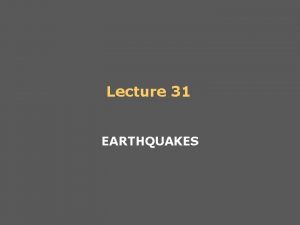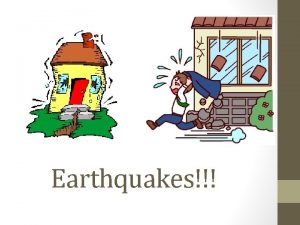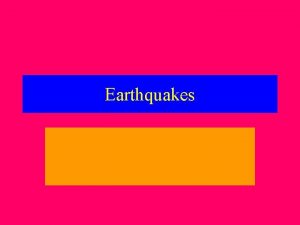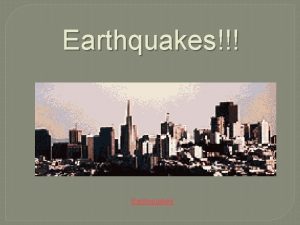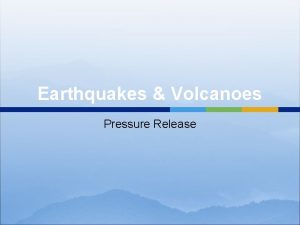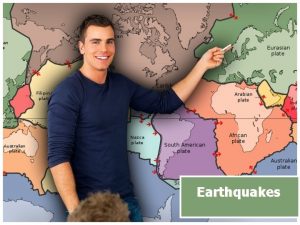Chapter 8 Earthquakes I What are Earthquakes Seismology




















- Slides: 20

Chapter 8 Earthquakes

I. What are Earthquakes? • Seismology is the science devoted to studying earthquakes • Most take place near the edges of tectonic plates • Earthquakes are caused by elastic deformation • Rocks stretch to a certain point and then suddenly return to its original shape in elastic rebound • Energy is released and some of this energy travels as seismic waves that cause earthquakes

A. Faults at Tectonic Plate Boundaries • A specific type of motion takes place at different tectonic plate boundaries • Each motion creates a particular kind of fault - Transform strike-slip fault - Convergent reverse fault - Divergent normal fault

1. Earthquake Zones • Places where a large number of faults are located • Some earthquakes however happen along faults in the middle of tectonic plates

B. How do Earthquake Waves Travel? • Seismic waves that travel through the Earth’s interior are called body waves - P waves - S waves • Seismic waves that travel along the Earth’s surface are called surface waves

1. P Waves (primary waves) • Travel through solids, liquids, and gases • Fastest waves; travel ahead of other seismic waves • Move rock back and forth, squeezing and stretching the rock

2. S Waves (sear, or secondary waves) • Cannot travel through parts of the Earth that are completely liquid • Second-fastest seismic waves • Shear rock side to side

3. Surface Waves • Produce motion mostly in the upper few kilometers of Earth’s crust • Travel more slowly and are more destructive • Produces motion up, down, and around or back-and-forth

II. Earthquake Measurement A. Locating Earthquakes • Seismographs are instruments located at or near the surface of the Earth that record seismic waves • When the waves reach a seismograph, the seismograph creates a seismogram

1. Determining Time and Location of Earthquakes • The start time is determined by comparing seismograms and noting the differences in arrival times of P and S waves • Seismograms are also used to find the earthquake’s epicenter - An epicenter is the point on the Earth’s surface directly above an earthquake’s starting point

• A focus is the point inside the Earth where an earthquake begins

2. The S-P Time Method • Seismograms from different locations are compared • Seismograms are placed on a time-distance graph • The horizontal axis tells the distance between a station and the earthquake’s epicenter

• A circle is drawn around three seismograph stations with the radius of the circle coming from the horizontal axis of the time-distance graph • The point where all three circles intersects is the earthquake’s epicenter

B. Measuring Earthquake Strength and Intensity 1. The Richter Magnitude Scale • Charles Richter created the scale in the 1930 s • Compares earthquake’s by measuring ground motion recorded by seismograms

2. Earthquake Ground Motion • Magnitude is a measure of the strength of an earthquake • Magnitude values are from 2 to 7 • Each time the magnitude increases by one unit, the measured ground motion becomes 10 times larger Ex) Magnitude of 5 is 10 x greater than magnitude of 4 and 100 x greater than magnitude of 3

3. Modified Mercalli Intensity Scale • Intensity is a measure of the degree to which an earthquake is felt by people and the amount of damage • Scale of Roman numerals from I to XII - An earthquake not felt by people to total damage of an area • Intensity values are usually higher near an earthquake’s epicenter

III. Earthquakes and Society A. Earthquake Hazard • A measure of how likely an area is to have damaging earthquakes in the future • The West Coast has a high earthquakehazard level because it has a lot of seismic activity

B. Earthquake Forecasting 1. Strength and Frequency • Strength of earthquakes is related to how often they occur

2. The Gap Hypothesis • A hypothesis that states that sections of active faults that have had relatively few earthquakes are likely to be the sites of strong earthquakes in the future • The areas along a fault where relatively few earthquakes have occurred are called seismic gaps

C. Earthquakes and Buildings • The process of making older structures more earthquake resistant is called retrofitting - Securely fastening buildings to their foundation - Steel can be used to strengthen structures made of brick • Architects and engineers use the newest technology to design and construct buildings and bridges to better withstand earthquakes
 Mikael ferm
Mikael ferm Seismology timeline
Seismology timeline Focal mechanism beach ball
Focal mechanism beach ball Orfeus seismology
Orfeus seismology Seismology nepal
Seismology nepal Seismology
Seismology Focal point engineering
Focal point engineering Seismology
Seismology Whats seismology
Whats seismology Elements of seismology
Elements of seismology Seismology
Seismology Seismology
Seismology Seismology
Seismology Chapter 8 section 1 what are earthquakes
Chapter 8 section 1 what are earthquakes Chapter 8 earthquakes and volcanoes
Chapter 8 earthquakes and volcanoes Chapter 8 earthquakes and earth's interior
Chapter 8 earthquakes and earth's interior Chapter 19 earthquakes
Chapter 19 earthquakes Chapter 8 earthquakes and earth's interior
Chapter 8 earthquakes and earth's interior Chapter 19 earthquakes
Chapter 19 earthquakes In what section of earth do earthquakes happen
In what section of earth do earthquakes happen Btn earthquakes
Btn earthquakes

